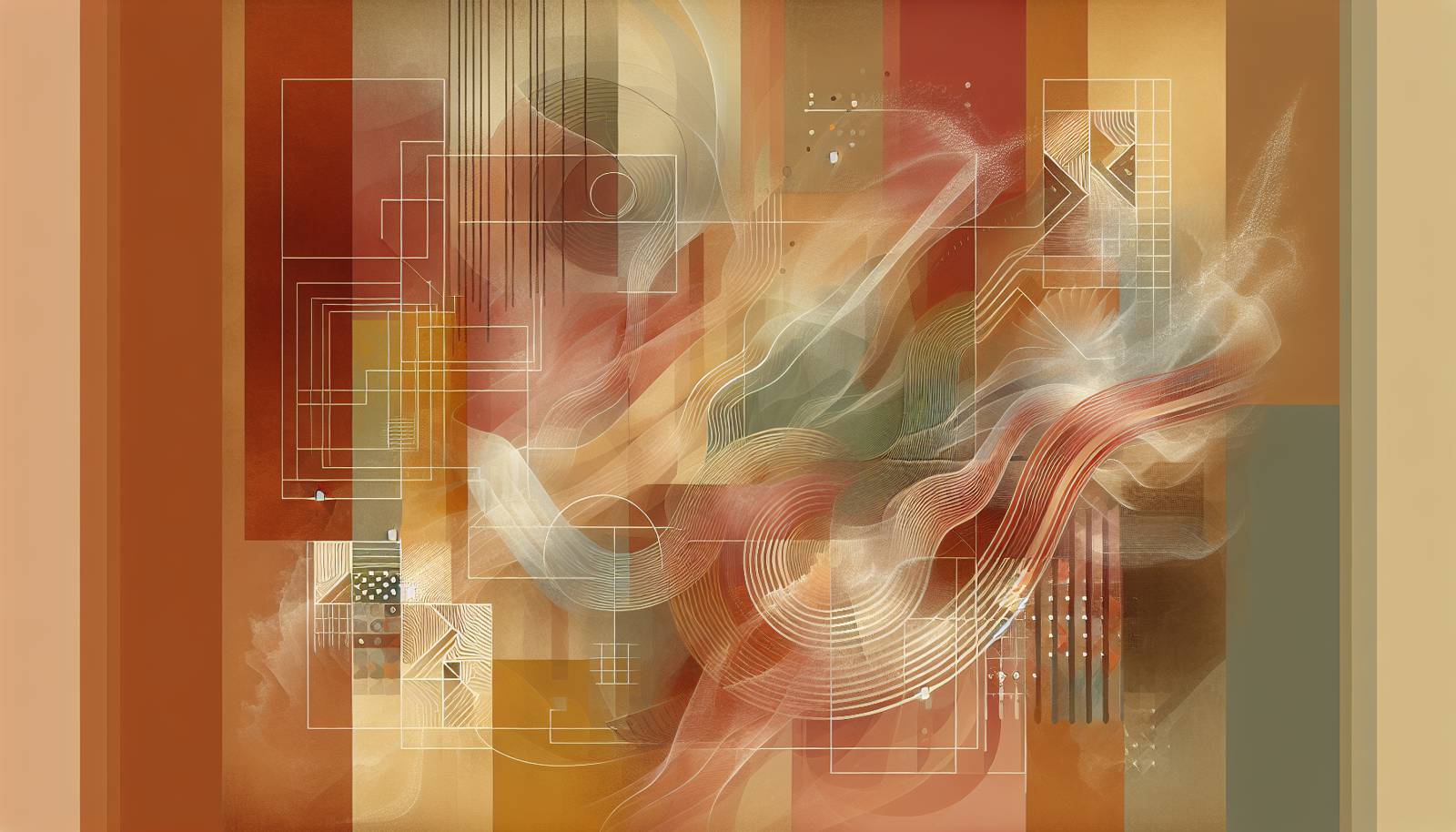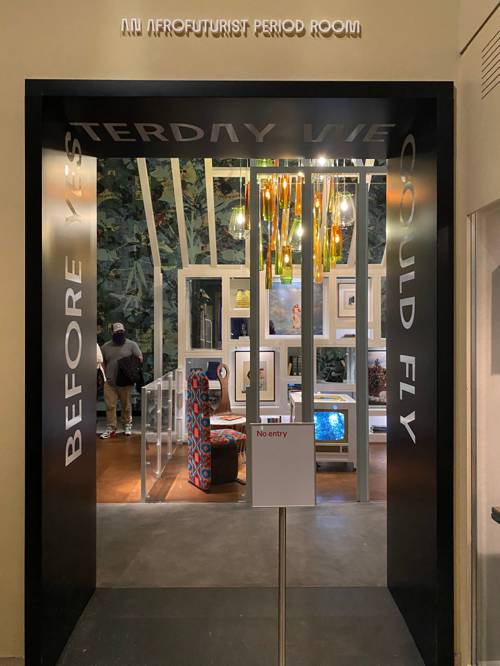
FAQ About The Role of Afrofuturism in Visual Arts

What is Afrofuturism in visual arts?
Afrofuturism in visual arts is an aesthetic and cultural movement that combines elements of science fiction, historical fiction, fantasy, and Afrocentrism. It aims to address themes and concerns of the African diaspora by exploring futuristic or otherworldly concepts. Afrofuturism uses imaginative depictions to re-envision the future and reclaim the narrative around African heritage and culture.

How does Afrofuturism challenge traditional perceptions of African cultures?
Afrofuturism challenges traditional perceptions by presenting African cultures and people in futuristic contexts where they are technologically advanced, empowered, and integral to world history. It defies stereotypes of Africa as 'backward' or 'underdeveloped' by reimagining African futures and placing African descendants as leaders and innovators in speculative worlds.

Can you give examples of Afrofuturism in visual arts?
Examples of Afrofuturism in visual arts include the works of visual artists such as Wangechi Mutu, whose collages blend African aesthetics with sci-fi elements, and Jean-Michel Basquiat, whose paintings often explored themes of heritage and identity. Additionally, films like 'Black Panther' exemplify Afrofuturism through their depiction of Wakanda, a fictional African nation with advanced technology and culture.

What are some common themes in Afrofuturism visual arts?
Common themes in Afrofuturism visual arts include identity, race, global politics, history, and the blending of ancient traditions with futuristic visions. Artists often explore the impact of colonialism while reimagining African narratives that empower and celebrate black culture and technological potential.

How has Afrofuturism influenced contemporary visual artists?
Afrofuturism has influenced contemporary visual artists by encouraging them to think beyond conventional narratives and embrace speculative, science fiction-like scenarios to reflect on the African diaspora's impact on the present and future. This movement has inspired artists to experiment with different forms of media, embrace cultural hybridity, and explore socio-political issues through an Afrocentric lens.

Why is Afrofuturism important in the visual arts?
Afrofuturism is important in the visual arts because it provides a platform to express complex African and diasporic experiences, enabling artists to reclaim historical narratives and envision a more inclusive future. It challenges pervasive stereotypes, promotes cultural pride, and fosters a sense of identity and empowerment among marginalized communities.

In what ways does Afrofuturism incorporate technology in visual arts?
Afrofuturism incorporates technology in visual arts by exploring speculative technologies that imagine progress and innovation in African contexts. This can involve futuristic architecture, advanced cybernetics, and space exploration themes that highlight black technological contributions and potential. By doing so, Afrofuturism reclaims technology as an integral part of African narratives and futures.

How does Afrofuturism intersect with science fiction in visual arts?
Afrofuturism intersects with science fiction in visual arts by using speculative imagery and narratives that draw from sci-fi aesthetics. This includes depictions of alternative realities, space travel, alien encounters, and time travel that are rooted in African cultural heritage and insights, creating a unique blend of cultural richness and futurism.

What role do historical elements play in Afrofuturism visual arts?
Historical elements in Afrofuturism visual arts serve as foundational pillars that artists use to connect past, present, and future. By integrating historical symbols, myths, and narratives, artists recontextualize African history within futuristic or alternative timelines, offering a reimagined vision of African achievements and cultural richness that transcends time.

How do Afrofuturism artists portray the African diaspora?
Afrofuturism artists portray the African diaspora as dynamic and integral to global culture and technological advances. They often emphasize themes of resilience, innovation, and cultural fusion, highlighting the influence of African descendants in shaping future scenarios. Their work celebrates the diversity and cultural heritage of the diaspora while challenging conventional stereotypes.

What impact has Afrofuturism had on cultural identity?
Afrofuturism has had a profound impact on cultural identity by fostering a sense of pride and empowerment among people of African descent. Through its creative reinterpretation of African heritage and futuristic possibilities, it encourages individuals to embrace their cultural roots and envision themselves as part of a larger narrative of progress and achievement.

How is Afrofuturism represented in digital art?
Afrofuturism in digital art is represented through vibrant, surreal imagery that often combines traditional African motifs with futuristic technology themes. Artists use digital platforms to create immersive visual experiences that explore cosmic journeys, post-apocalyptic societies, and alternative realities, often highlighting Afrocentric themes and digital innovation.

Can Afrofuturism be found in other forms of art besides visual arts?
Yes, Afrofuturism can be found across various forms of art, including literature, music, fashion, and film. It is a multidisciplinary movement that influences storytelling, design, and cultural expressions in all these areas, using speculative and futuristic frameworks to reimagine black identity and culture across the globe.

What are some notable exhibitions of Afrofuturism in visual arts?
Notable exhibitions of Afrofuturism in visual arts include 'Black Utopia' at the Museum of Contemporary African Diasporan Arts and 'The Shadows Took Shape' at the Studio Museum in Harlem. These exhibitions featured a range of artists and provided a platform for exploring the themes and narratives central to the Afrofuturism movement.

How is Afrofuturism influencing fashion and design?
Afrofuturism is influencing fashion and design by inspiring unique styles that blend traditional African garments and accessories with futuristic elements such as metallic fabrics, bold colors, and geometric shapes. Designers gain inspiration from science fiction and African heritage to create avant-garde garments and accessories that celebrate cultural identity and futuristic vision.

What challenges do Afrofuturism artists face in the visual arts sector?
Afrofuturism artists face challenges such as the general misconception of their work as niche or overly fantastical, which can limit mainstream acceptance and opportunities. They also contend with the need to balance commercial success with cultural integrity and to overcome stereotypes and biases about African art and narratives.

How has Afrofuturism contributed to global conversations on diversity and inclusion?
Afrofuturism has contributed to global conversations on diversity and inclusion by providing a platform that highlights marginalized voices and emphasizes cultural plurality. By reshaping stories around African identities and futures, it challenges dominant narratives and encourages a broader, more inclusive discourse on cultural representation and racial equity.

Is Afrofuturism considered a form of activism?
Yes, Afrofuturism is often considered a form of activism because it uses art as a medium to critique social inequalities, highlight racial injustices, and promote visions of a more equitable future. By creating works that inspire change and awareness, Afrofuturist artists contribute to social justice movements and dialogues on race and identity.

What influence has Afrofuturism had on mainstream media?
Afrofuturism has influenced mainstream media by introducing more diverse narratives and characters that celebrate black culture and innovation. This influence is evident in films, music videos, and popular comic books that incorporate Afrofuturistic themes, such as Marvel's 'Black Panther', thereby broadening the scope of representation in popular culture.

Who are some pioneering Afrofuturism visual artists?
Some pioneering Afrofuturism visual artists include Sun Ra, known for his elaborate cosmic imagery associated with music, and Octavia Butler, whose narratives have inspired many visual interpretations. Contemporary artists such as Kara Walker and Yinka Shonibare also use Afrofuturism themes to explore issues of identity, history, and cultural legacy in their work.
